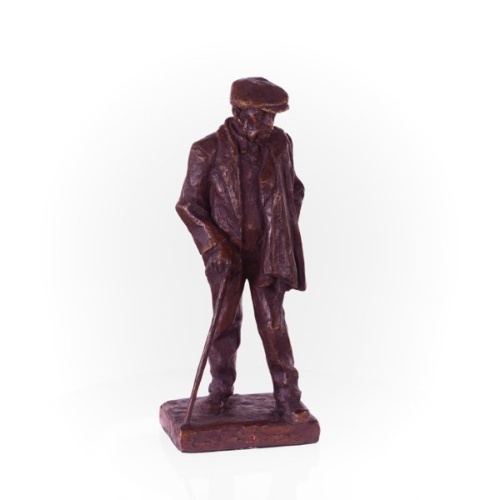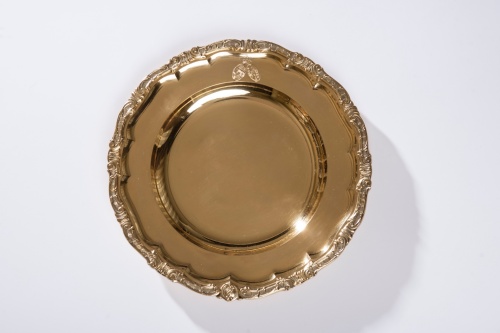"Schützenkette" ("marksmen’s chain")

- "Schützenkette" ("marksmen’s chain")
- 1920s/30s
- 19 medals
- inscribed on the reverse
- length: approx. 90 cm
“Schützenketten” (“marksmen’s chains”) were awarded to the “Schützenkönig” (“king of the marksmen”) and the new medal was added to them. The upper row of this chain bears the following medals (from left to right): 1st Prize Freehand from R. Nauditt Royal Shoot 1933, Mecklenburg championship Neubrandenburg 1927, Freehand Marksmen’s Association 24th July 1928, Oak tree disc 1st prize Rostock 1929, Rostock championship 1929, Low Calibre 5.8.1930, Marksmen’s Hiking Cup 1929 1st Prize, Master Marksman Güstrow 1931.
In the lower row: III. Freehand Marksmen’s Championship 1931, Concordia, XX. Mecklenburg State Marksmen’s Festival Parchim 28.6.–1.7.25, Fixed Disc Germany 1926, XVIII. German Federal Shooting Competition Munich 1927, Rostock championship 1926, Social Shooting Competition 1926, 18th German Federal Shooting Competition Munich 1927, Freehand Marksmen’s Association Rostock 24th July 1923, 21st Mecklenburg State Marksmen’s Festival Neubrandenburg 18.–22.6.1927, Miners Marksmen Freehand 1927.
The first “Schützenzünfte” (“marksmen’s guilds”) in Mecklenburg were recorded as early as 1514. “Schützenvereine“ (“marksmen’s clubs”) in their current form date back to the early 19th century after the Napoleonic Wars. The annual “Schützenfest” (“marksmen’s festival”) had particular significance in the small Mecklenburg towns as it provided a change from the rather humdrum daily life. The Mecklenburg “Schützenbund” (“marksmen’s association”) was formed in 1865, following the establishment of the German “Schützenbund” in Gotha in 1861.
“The days in such a small Mecklenburg rural town are shaped by a sense of constant monotony […] Yet on one day these privileged places of boredom are the venue for the “Königsschuss” (“royal shoot”), which is generally held in the middle of summer and fully makes up for the rest of the year.[…] The long awaited time of the “Königsschuss,” usually celebrated in the month of July, finally approaches. The state’s grey blotting paper “news sheet” contains a delicately worded invitation to the “older people of the respectable guild“, from near and far, to glorify the event by attending in numbers. The significant day, when this issue of the newspaper arrives in the town, proudly displaying the invitation. […] With a sense of yearning and anticipation, shortened by the necessary preparations, which fully occupy all available hands in the family, the final week has finally elapsed and the eve of the celebration has arrived. The town has a very different appearance and is no longer comparable with day to day life. Piles of all types of dirt, which had been able to quietly gather on the streets all year long, are removed from the “municipal paths,” so that they do not pose a hazard for the processional trains. […] Today everything is full of delight and activity because tomorrow is the “Königsschuss.” Stalls are loaded up on the streets and then taken to the place of celebration, usually in front of the gate, close to the grand “Schützenhause,” ready to be filled with all types of treats and colourful fancies to please the most covetous minds.”
(August Lewald: “Chronicle of the civilised world” 1846)
Text: C. RC.



















